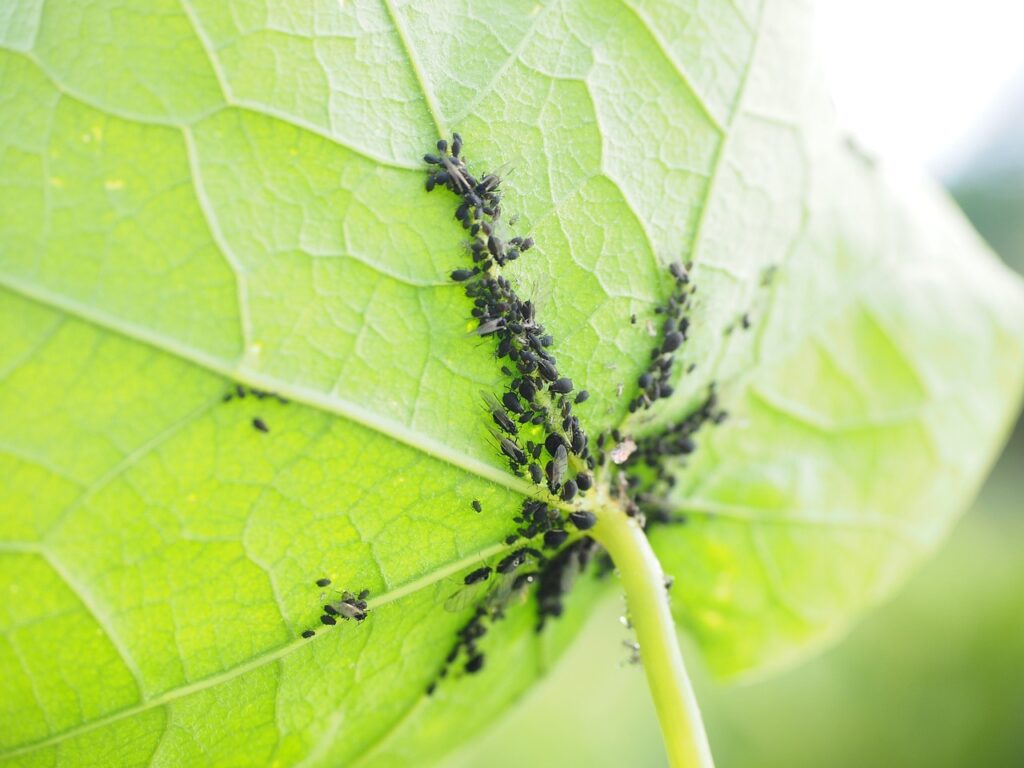
In a quick read of my emails and many gardening social media sites, you’ll see dozens of references to aphids on plants in the Indiana landscape.
Aphids have appeared on many plants in the landscape, from vegetables, annuals and perennials to trees and shrubs. Even the weeds.
What are aphids?
Aphids are tiny insects (1/16 to 1/8 inch long) found in many colors. These soft-body, pear-shaped insects suck juices from leaves, flowers, buds and stems. Aphids have two antennae, six spindly legs and a beak – called a piercing sucking mouth part in entomology. Among the more than 4,000 species of aphids are those that will feed on roots. Some have wings.
Aphids usually are plant specific. Just because you have aphids on roses doesn’t mean the insects will move to tomatoes or other plants.
How do you know your plants have aphids?
The greatest telltale sign is honeydew, a polite word for the sweet, sticky excrement of aphids and some other insects. The honeydew leaves a shiny, sticky sheen to leaves, stems and other plant parts. You also can find aphids along stems, the undersides of leaves and on leaf and flower buds.
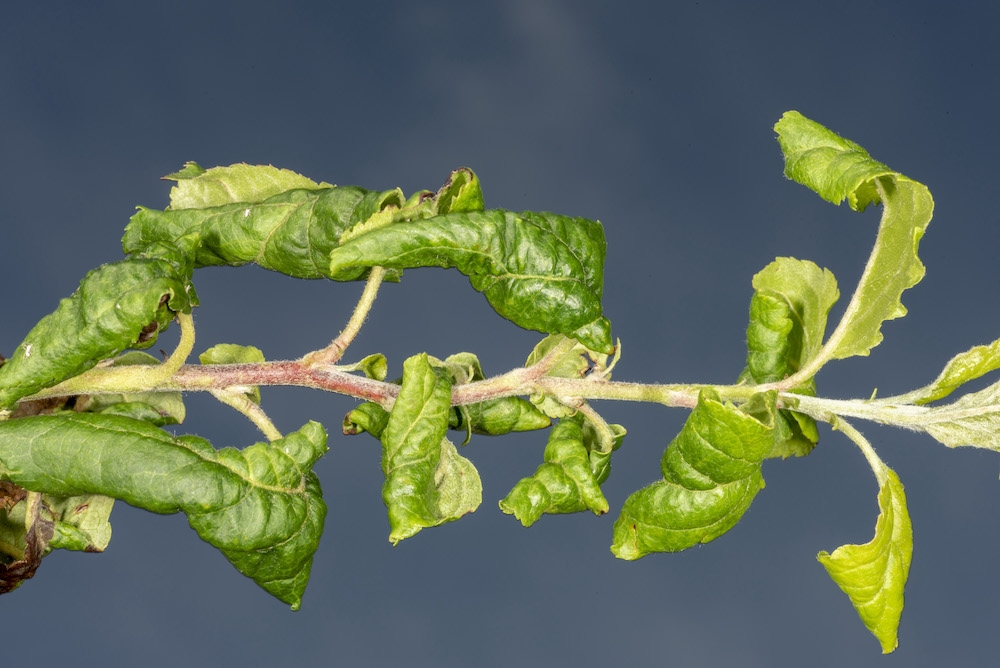
What do aphids do to plants?
Aphids are a normal part of nature. Environmental conditions, plant insect or disease problems, drought and fast growth signal to aphids to check things out. Most of the time, aphids’ sucking nutrients from plants are a minor problem. However, a large outbreak will cause serious damage to leaves, stems and buds.
This spring’s weather was a major player in what seems like a record year for aphid outbreaks, said Cliff Sadof, a Purdue University entomology professor, and one of my go-to bug guys. “It’s been really dry. I’ve never seen anything like this.”
In Indiana, spring was long, he said. With typical Indiana weather, first it was warm, which pushed growth; then cold weather, which slowed growth, warmer temps, rain and plant growth was again pushed.
This succulent new growth is just what the aphids ordered. The fluctuating weather pattern delayed plants’ ability to harden off, making new growth susceptible to hungry aphids. “They thrive on plants that are sending nutrients to their leaves and shoots,” he said.
How do you control aphids?
Aphids can be found on all types of plants, including annuals and vegetables, even trees and shrubs.
What to do when you have aphids depends on a couple of things, Sadof said. “You need to ask yourself your objective.” There are two: Are you concerned about plant health or the nuisance effect of sooty mold on plants, furniture and cars. Or both?
Mother Nature’s aphid control
Mother Nature supplies lady beetles and their larvae for aphid control. They eat the aphids, so if you see a lady beetle (either native or Asian), don’t kill them. The larva looks a bit strange, but don’t kill that either. Just let the insects do their job.
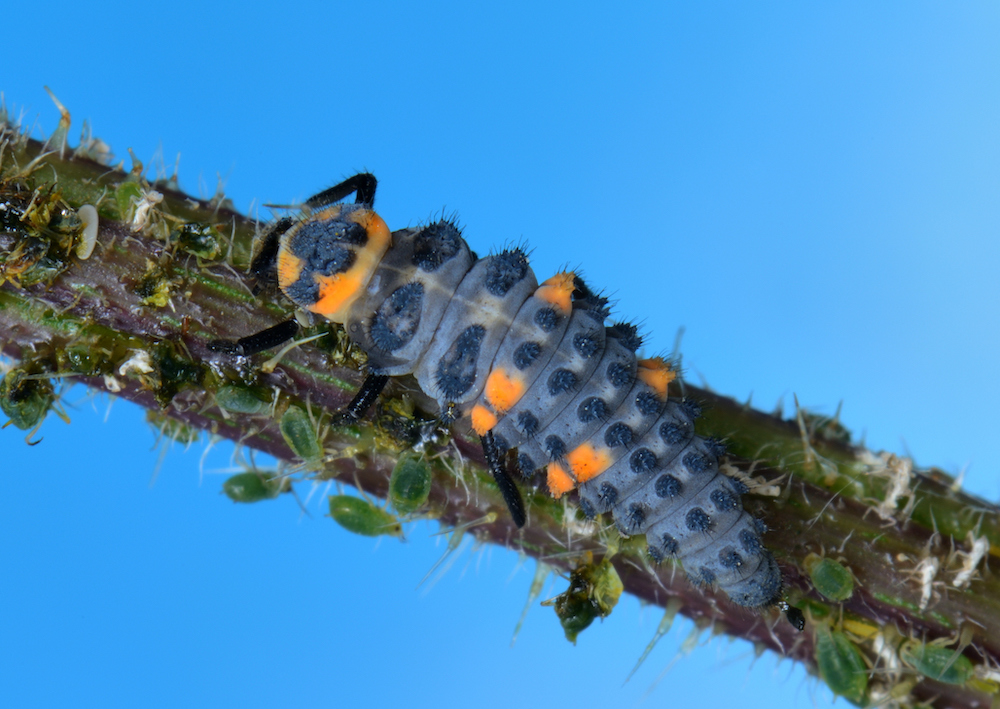
On small plants, give aphids a shower
Spray aphids off small plants and shrubs with water from the hose. Horticulturist Debra Knapke, a garden writer colleague in Ohio, suggests this knocks the insects to the ground, where they may make a meal for aphid predators. Sadof says this knocks them off, but they may come back. This is the method I use. I just keep spraying them off until I don’t see any.
Insecticidal soap kills aphids
Readily available at garden centers and home improvement stores, insecticidal spray effectively kills soft body insects like aphids. Usually, you spray plants and then spray again after a few days. However, please read and follow the label directions.
Insecticidal soap is usually approved for organic garden methods. There are dozens of recipes available on the internet, but I prefer a product specially formulated and approved for its use.
Other insecticides
There are other insecticides that also control aphids.
Neem
As I told the professor, I’ve been gardening for more than 30 years, and I’ve never used neem. “Whenever anyone posts about using neem, they say it burns the plant,” I told him.
He did research on neem and roses years ago, he said. When roses were treated weekly, neem burned the plant. “It dries most of the plants out,” he said. However, he said soaps and oils as part of the research, and he had the same results when applied weekly. He suggests apply neem, then waiting at least a week to 10 days before reapplying.
Systemic insecticides
Some insecticides fill the plant with insect killer. These are usually soil drenches or injections of the insecticide. Plants pull the insecticide to all parts, including leaves, stems, buds and blooming flowers. Systemic products are available for roses, which is low on the pollinator friendly chart of plants.
However, the flowers of trees and shrubs treated with a systemic may mean death to bees and other pollinators. And caterpillars who chew on the leaves of a plants treated with a systemic will also be killed.
Aphids on trees
Trees infested with aphids can be a huge problem. The honeydew drips like rain onto whatever is below – plants, cars, furniture, pets, heads. Not only is this a huge sticky, drippy problem, it’s also difficult to treat.
Options are a systemic (see above) or a foliar spray. By the time you realize you have aphids in a tree, it’s usually too late for it to benefit from a systemic treatment. That leaves a foliar spray, which for large trees involves a cherry picker and other equipment that translate to a pricey job requiring an arborist.
A few years ago, I wrote about a major scale infestation on oak trees with major honeydew drips in Indianapolis’ Meridian Kessler neighborhood.
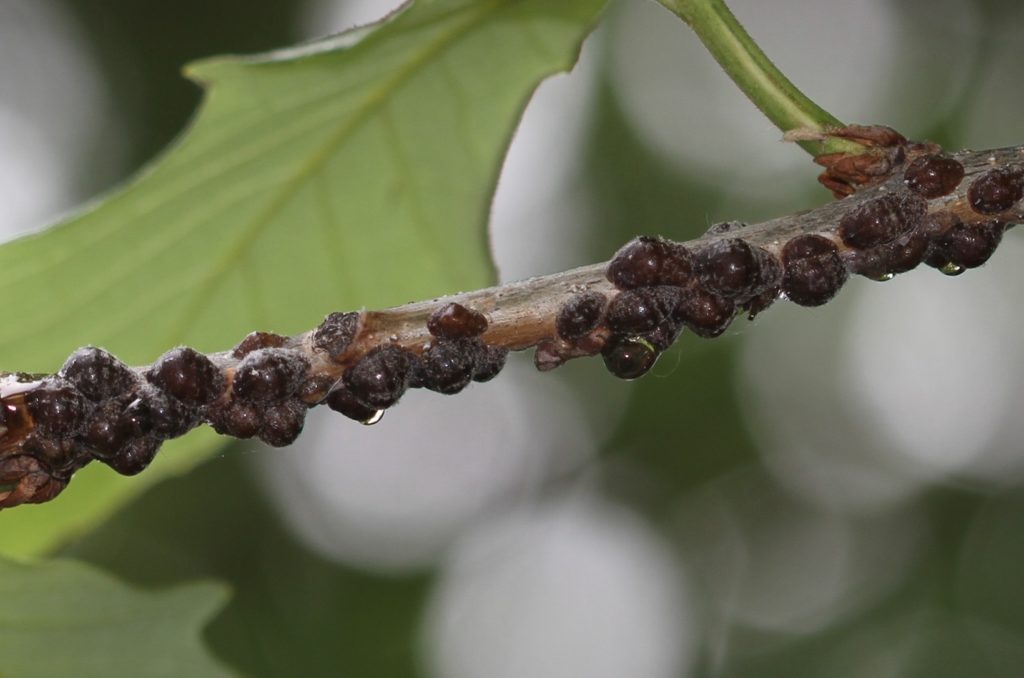
What about honeydew on plants and stuff?
- Spray off as much honeydew from plants as much as possible. Do this every day, if necessary. If left on plants or furniture, the honeydew promotes development of sooty mold. Just about anything honeydew hits is susceptible to sooty mold.
The mold coats the leaves of plants, reducing the amount of sunlight they will get. This disruption of photosynthesis causes stunted growth. It can also cause early leaf drop.
- Wash off the honeydew from hard surfaces as frequently as necessary. Sadof suggested using a power washer, set so it won’t blast off paint off the furniture.
- Run the car through a car wash, as needed. Car washes, which recycle the water they use, are more environmentally friendly that doing it yourself at home.
How long will aphids be here?
Aphids will hang around for another two or three weeks, Sadof said. Remember that conditions need to be just right for aphids to take over.
Ants farm aphids
A lot of reports about aphids mention the presence of ants. Ants love honeydew. They love it so much that they corral ants to mine or farm the honeydew. (Be sure to watch the video, narrated by Hank Green.) By tending to the aphids, including feeding them, ants protect them from predators, like lady beetle larva. The aphids return the favor by allowing ants’ antennae to touch them, which promotes the excretion of honeydew. This process is called milking.
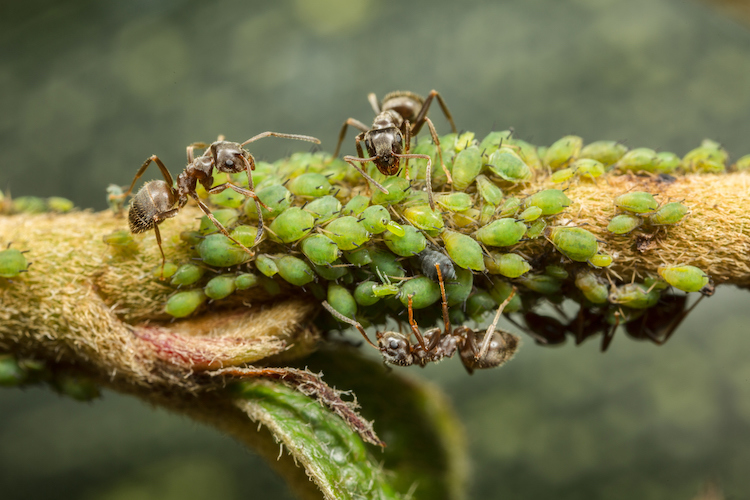
Thanks, Jo Ellen! Very helpful!!
Thanks, Marianne.